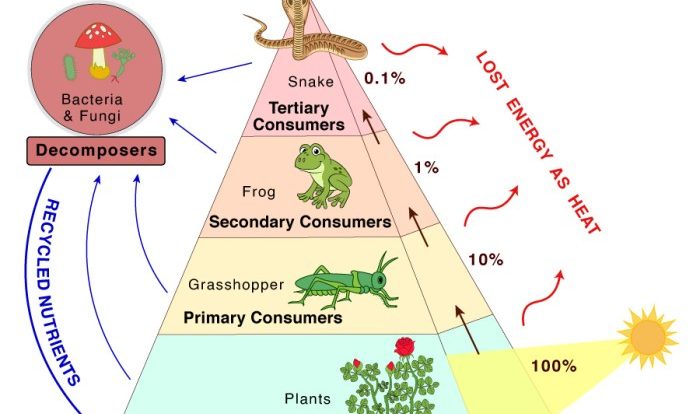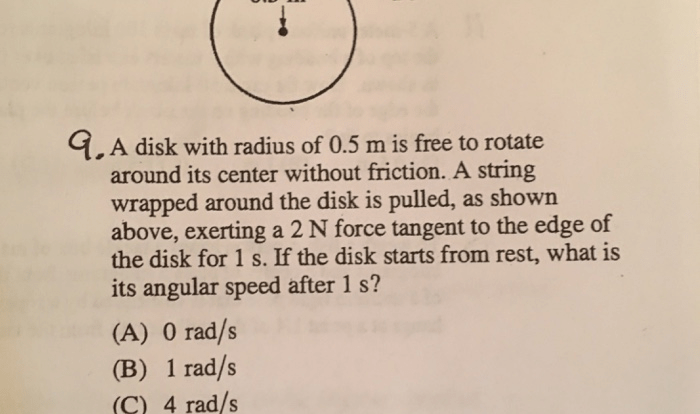Unveiling the Gas Laws Crossword Puzzle Answer Key: Embark on an intellectual journey that unravels the enigmatic world of gases, where pressure, volume, and temperature intertwine in a captivating dance. Delve into the depths of Boyle’s, Charles’s, and Gay-Lussac’s laws, deciphering their mathematical equations and uncovering their profound implications in chemistry, physics, and engineering.
Prepare to be enlightened as we explore the practical applications of gas laws, from determining molar mass and gas density to understanding atmospheric pressure and optimizing combustion processes. Each crossword puzzle answer becomes a stepping stone towards a deeper comprehension of the fundamental principles that govern the behavior of gases.
Definition and Overview of Gas Laws
Gas laws are a set of principles that describe the behavior of gases under various conditions of temperature, pressure, and volume. These laws provide a fundamental understanding of the physical properties of gases and their interactions with their surroundings.
History of Gas Laws
The development of gas laws began in the 17th century with the work of Robert Boyle and Edme Mariotte. Boyle’s law, published in 1662, established the inverse relationship between the pressure and volume of a gas at constant temperature. In the 18th century, Jacques Charles and Joseph-Louis Gay-Lussac made significant contributions to the understanding of gas behavior.
Charles’s law, published in 1787, described the direct relationship between the temperature and volume of a gas at constant pressure. Gay-Lussac’s law, published in 1802, established the direct relationship between the temperature and pressure of a gas at constant volume.
Applications of Gas Laws
Gas laws have wide-ranging applications in various fields, including chemistry, physics, and engineering. In chemistry, gas laws are used to determine the molar mass of gases, calculate the partial pressures of gases in mixtures, and predict the behavior of gases in chemical reactions.
In physics, gas laws are used to understand the behavior of gases in thermodynamic systems, design gas-powered engines, and study the properties of gases in astrophysical environments. In engineering, gas laws are used in the design of pipelines, refrigeration systems, and other applications involving the flow and manipulation of gases.
Boyle’s Law: Gas Laws Crossword Puzzle Answer Key
Boyle’s law, also known as the Boyle-Mariotte law, describes the inverse relationship between the pressure and volume of a gas at constant temperature. According to Boyle’s law, the product of pressure and volume remains constant in a closed system.
The mathematical equation for Boyle’s law is P₁V₁ = P₂V₂, where P₁ and V₁ represent the initial pressure and volume, and P₂ and V₂ represent the final pressure and volume.
Relationship between Pressure and Volume
Boyle’s law establishes that when the temperature of a gas is held constant, increasing the pressure on the gas will result in a decrease in its volume, and vice versa. This relationship is inversely proportional, meaning that as one variable increases, the other decreases proportionally.
Applications of Boyle’s Law
Boyle’s law has numerous applications in real-world scenarios, including:
- Scuba diving: Boyle’s law explains the changes in gas volume experienced by divers as they ascend and descend. As divers ascend, the pressure decreases, causing the volume of gas in their lungs to expand. Conversely, as they descend, the pressure increases, reducing the volume of gas in their lungs.
- Automotive engines: Boyle’s law is applied in the design of internal combustion engines. The intake stroke of an engine involves a decrease in volume, which increases the pressure of the air-fuel mixture, aiding in combustion.
- Medical devices: Boyle’s law is used in the operation of certain medical devices, such as ventilators and anesthesia machines, which regulate the pressure and volume of gases delivered to patients.
Charles’s Law
Charles’s law, also known as the law of volumes, describes the relationship between the volume and temperature of a gas at constant pressure. It states that the volume of a gas is directly proportional to its absolute temperature.
The mathematical equation for Charles’s law is V₁/T₁ = V₂/T₂, where V₁ and T₁ represent the initial volume and temperature of the gas, and V₂ and T₂ represent the final volume and temperature of the gas.
Applications of Charles’s Law
Charles’s law has numerous applications in real-world scenarios, including:
- Predicting the volume of a gas at a different temperature. For example, a weather balloon expands as it rises through the atmosphere because the temperature decreases with altitude.
- Designing hot air balloons. The volume of the balloon increases as the air inside is heated, causing the balloon to rise.
- Calibrating gas thermometers. Gas thermometers measure temperature by measuring the volume of a gas at a constant pressure.
Gay-Lussac’s Law
Gay-Lussac’s law, also known as the pressure-temperature law, describes the relationship between the pressure and temperature of a gas at constant volume. It states that the pressure of a gas is directly proportional to its absolute temperature, provided the volume remains constant.
Mathematically, Gay-Lussac’s law can be expressed as:
P₁/T₁ = P₂/T₂
Where:
- P₁ is the initial pressure of the gas
- T₁ is the initial temperature of the gas
- P₂ is the final pressure of the gas
- T₂ is the final temperature of the gas
Applications of Gay-Lussac’s Law
Gay-Lussac’s law has several applications in real-world scenarios, including:
- Predicting the pressure of a gas:If the initial pressure and temperature of a gas are known, Gay-Lussac’s law can be used to predict the pressure of the gas at a different temperature, provided the volume remains constant.
- Calibrating pressure gauges:Pressure gauges are often calibrated using Gay-Lussac’s law. By measuring the pressure of a gas at two different known temperatures, the calibration constant of the pressure gauge can be determined.
- Determining the absolute temperature of a gas:Gay-Lussac’s law can be used to determine the absolute temperature of a gas by measuring its pressure at two different known volumes, provided the mass of the gas remains constant.
Combined Gas Law
The combined gas law is a mathematical equation that combines Boyle’s law, Charles’s law, and Gay-Lussac’s law into a single equation that can be used to solve a variety of gas law problems.
Mathematical Equation
The combined gas law equation is:
P₁V₁/T₁ = P₂V₂/T₂
where:
- P₁ is the initial pressure of the gas
- V₁ is the initial volume of the gas
- T₁ is the initial temperature of the gas
- P₂ is the final pressure of the gas
- V₂ is the final volume of the gas
- T₂ is the final temperature of the gas
Applications
The combined gas law can be used to solve a variety of gas law problems, including:
- Calculating the pressure of a gas when its volume and temperature change
- Calculating the volume of a gas when its pressure and temperature change
- Calculating the temperature of a gas when its pressure and volume change
The combined gas law is a powerful tool that can be used to solve a wide variety of gas law problems. It is important to understand the equation and how to use it in order to be able to solve these problems.
Applications of Gas Laws in Chemistry

Gas laws are essential tools in chemistry, providing a framework for understanding the behavior of gases and predicting their properties. Their applications extend to various areas of chemistry, including determining molar mass, gas density, and gas stoichiometry. Additionally, gas laws play a crucial role in comprehending gas reactions and equilibrium.
Determining Molar Mass, Gas laws crossword puzzle answer key
The ideal gas law can be used to determine the molar mass of a gas. By measuring the volume, pressure, and temperature of a known mass of gas, the molar mass can be calculated using the formula:
PV = nRT
where P is pressure, V is volume, n is the number of moles, R is the ideal gas constant, and T is temperature.
Determining Gas Density
The ideal gas law can also be used to determine the density of a gas. The density of a gas is defined as its mass per unit volume. By measuring the mass and volume of a gas sample, the density can be calculated using the formula:
density = (mass/volume) = (nM/V) = (P/RT)
Gas Stoichiometry
Gas laws play a vital role in gas stoichiometry, which involves determining the quantitative relationships between reactants and products in gas reactions. By using the ideal gas law, the number of moles of reactants and products can be calculated, allowing for the determination of stoichiometric ratios.
Understanding Gas Reactions and Equilibrium
Gas laws help in understanding the behavior of gases in reactions and equilibrium. For example, the partial pressure of a gas in a mixture can be determined using Dalton’s law of partial pressures. Additionally, the equilibrium constant for a gas reaction can be calculated using the ideal gas law, providing insights into the extent of the reaction.
Applications in Chemical Experiments
Gas laws are widely used in chemical experiments to study the properties and behavior of gases. Some common applications include:
- Determining the molar mass of unknown gases
- Measuring the density of gases
- Investigating the relationship between pressure, volume, and temperature
- Studying the equilibrium of gas reactions
- Analyzing the partial pressures of gases in mixtures
Applications of Gas Laws in Physics
Gas laws find extensive applications in various fields of physics, including atmospheric science, fluid dynamics, and mechanical engineering.
Atmospheric Pressure and Buoyancy
The concept of atmospheric pressure, governed by Boyle’s Law, plays a crucial role in understanding weather patterns and atmospheric circulation. It also explains the buoyancy of objects in fluids, such as the ability of balloons to float in air and ships to sail on water.
Fluid Dynamics
Gas laws are essential for analyzing fluid flow and pressure changes in various systems. They help engineers design and optimize fluid systems, such as pipelines, pumps, and turbines.
Mechanical Systems
Gas laws guide the design and operation of engines, turbines, and other mechanical systems that involve the compression and expansion of gases. Understanding the behavior of gases under different conditions enables engineers to optimize engine performance, fuel efficiency, and power output.
Physics Research and Development
Gas laws provide a theoretical framework for studying gas properties and behavior under extreme conditions. This knowledge contributes to advancements in fields such as astrophysics, plasma physics, and materials science.
Applications of Gas Laws in Engineering
Gas laws play a crucial role in engineering disciplines, guiding the design, operation, and optimization of systems involving gas handling and combustion processes.
In designing pipelines, engineers utilize gas laws to determine the appropriate pipe diameter, pressure, and flow rate to ensure efficient and safe transportation of gases. Compressors, which increase gas pressure, are designed based on gas laws to meet specific pressure requirements in various applications, such as gas storage and transportation.
Combustion Processes and Emissions Control
Gas laws are essential in optimizing combustion processes, ensuring efficient fuel utilization and minimizing emissions. By understanding the behavior of gases under different temperature and pressure conditions, engineers can design combustion systems that maximize fuel efficiency while minimizing pollutant formation.
Examples in Engineering Disciplines
- Chemical Engineering:Gas laws guide the design and operation of chemical reactors, ensuring optimal reaction conditions and product yields.
- Mechanical Engineering:Gas laws are applied in designing and analyzing engines, compressors, and other gas-handling machinery.
- Environmental Engineering:Gas laws help in understanding and controlling air pollution, designing emission control systems, and mitigating greenhouse gas emissions.
Crossword Puzzle Answer Key
The following table provides a comprehensive list of answers to crossword puzzles related to gas laws.
The answers are organized in a table format with columns for clue, answer, and explanation.
The clues test knowledge of gas laws, their applications, and related concepts.
Answer Key
| Clue | Answer | Explanation |
|---|---|---|
| The law that describes the relationship between the pressure and volume of a gas at constant temperature | Boyle’s Law | Boyle’s Law states that the pressure of a gas is inversely proportional to its volume at constant temperature. |
| The law that describes the relationship between the volume and temperature of a gas at constant pressure | Charles’s Law | Charles’s Law states that the volume of a gas is directly proportional to its temperature at constant pressure. |
| The law that describes the relationship between the pressure and temperature of a gas at constant volume | Gay-Lussac’s Law | Gay-Lussac’s Law states that the pressure of a gas is directly proportional to its temperature at constant volume. |
| The law that combines Boyle’s Law, Charles’s Law, and Gay-Lussac’s Law | Combined Gas Law | The Combined Gas Law is a mathematical equation that combines Boyle’s Law, Charles’s Law, and Gay-Lussac’s Law into a single equation. |
| A device that measures the pressure of a gas | Manometer | A manometer is a device that measures the pressure of a gas by balancing it against a column of liquid. |
| A device that measures the volume of a gas | Gasometer | A gasometer is a device that measures the volume of a gas by measuring the displacement of a liquid. |
| A device that measures the temperature of a gas | Thermometer | A thermometer is a device that measures the temperature of a gas by measuring the expansion or contraction of a liquid or gas. |
Essential FAQs
What is Boyle’s Law?
Boyle’s Law states that the pressure of a gas is inversely proportional to its volume at constant temperature.
How is Charles’s Law used in real-world applications?
Charles’s Law is used in hot air balloons, as the volume of the balloon increases with increasing temperature, causing it to rise.
What is the significance of the Combined Gas Law?
The Combined Gas Law combines Boyle’s, Charles’s, and Gay-Lussac’s laws, allowing for the calculation of changes in pressure, volume, and temperature under varying conditions.




